Roots - different types of wood and their suitability for the aquarium
Table of contents
Advantages of real roots in the aquarium
Real roots have some important advantages in the aquarium in general and in the shrimp aquarium in particular. They contain tannins that they release into the water, making the water more animal-friendly, and they promote the formation of growth and biofilms, which consist of bacteria, other microorganisms and algae. Biofilms are preferentially eaten by shrimp, antenna catfish, and other aufwuchsfressers. The microorganisms and unicellular algae in the growth contain important proteins and vitamins that shrimp, catfish and other growth eaters can utilize particularly well and which they urgently need. In addition, real wood roots provide important fiber to the aufwuchsfressern, because always also fine wood fibers are absorbed, which provide for a good digestion.
What happens if the roots turn the water brownish?
Real roots can turn the water a brownish color, and you see and read many tips on websites, in books and in groups on how to prevent this water coloration - boiling or soaking are just two of these methods, there are also filter additives like Purigen that can be used to remove the brown coloration from the water. Incidentally, if the roots color the water excessively, a good old large water change will also provide temporary relief. At some point the root is also "sucked out" and no longer colors the water strongly.
Now comes a big but: Exactly these tannins, which can discolor the water slightly to strongly tea-brown, bring extremely useful properties for shrimps and ornamental fish. Not only do they acidify the water quite slightly, they also have a mild antibacterial and fungicidal effect that can reduce the dangerous density of germs in the aquarium. Tannins from aquarium roots can also aid molting in crayfish, shrimp and crabs, and they can even bind and render harmless toxic heavy metals. In addition, the colors of ornamental fish and invertebrates in the aquarium come out much nicer in a slightly amber water, and the whole aquarium looks less "hard".
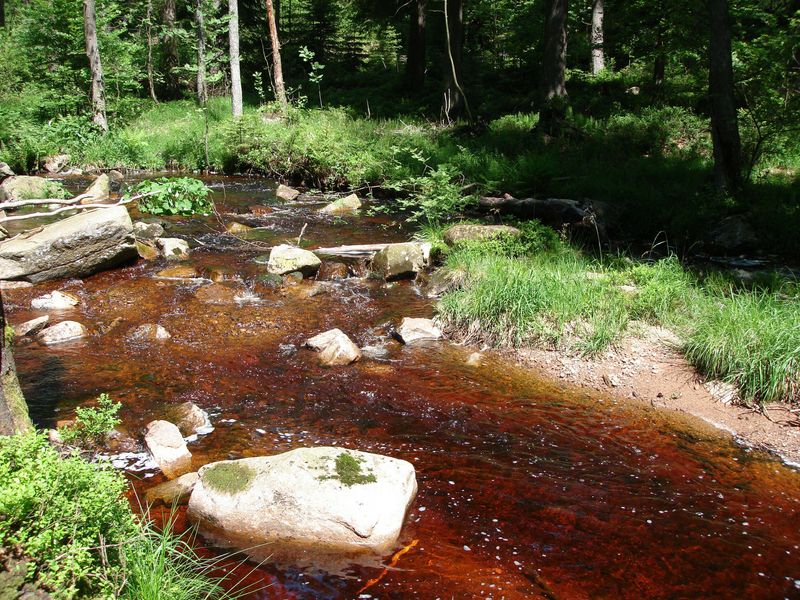
Should aquarium roots be boiled at all?
When boiling roots for the aquarium, opinions are divided anyway - boiled roots sink much faster, they do not accumulate bacteria so quickly and many of the tannins are flushed out, which would otherwise discolor the aquarium water, but the theory is that boiled wood in the aquarium gums and rots much faster. However, many aquarists have been boiling their roots for many years without any visible negative consequences.
However, it is not absolutely necessary to boil or scald the aquarium roots, and in the vast majority of cases the project should simply fail because the aquarium root does not fit into a normal cooking pot.
Wadding on new aquarium roots
In many types of wood for the aquarium, sugars are still stored, which offer various bacteria lush food. Especially with quite fresh roots this wadden bacterial coating appears very often. The bacterial lawn is whitish to yellowish and has a wadded, loose structure. However, it can also simply form thin biofilms that are somewhat more difficult to see. If the coatings don't get too thick and start to stink, you can just let the protozoa do their thing. Once the nutrients in the roots have been utilized, the thick biofilms will disappear. By the way, catfish, snails and shrimps find these whitish bacterial lawns very tasty!
Make aquarium roots sink faster
Aquarium roots made of light wood initially float in the aquarium until they become waterlogged - this is as normal as it is annoying. You can elegantly avoid the problem by pre-watering. Often the "problem" of a bacterial rust is already solved by pre-watering, and in the aquarium itself there is no more bacterial film on the root.
If you need to do it faster and you don't have time to pre-water the roots for weeks, you can alternatively simply weigh them down in the aquarium with a heavy stone. A little more complicated, but invisible, is to attach a stone plate under the root or to attach the aquarium root to the aquarium floor with one or more suction cups when setting up the aquarium.
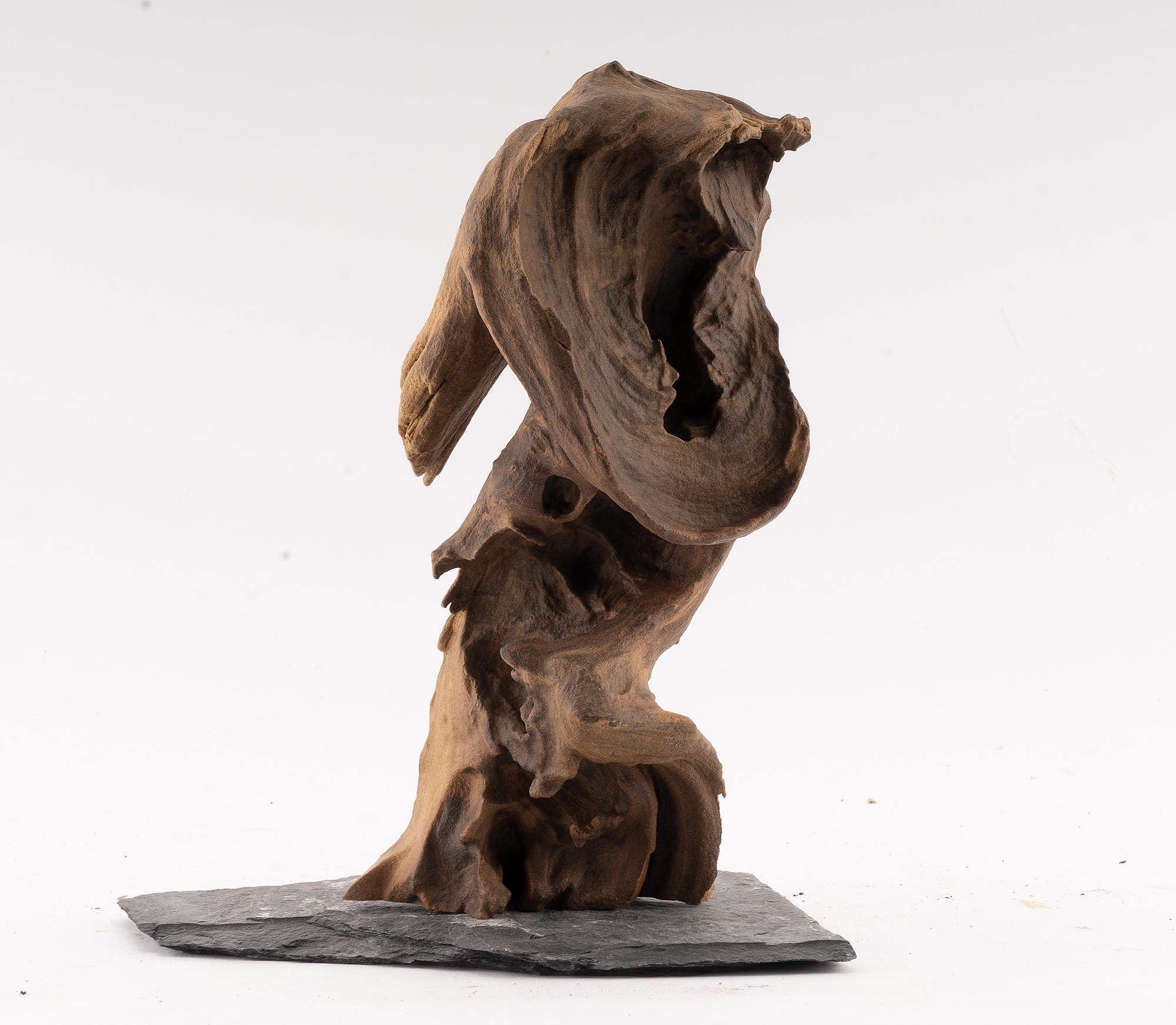
A little root science for the aquarium
Here is a small selection of suitable wood for shrimp aquarium in particular and for the aquarium in general - however, there are many more aquarium roots to buy, often they have very imaginatively chosen names such as Mystic Wood, Dream Roots or similar. As a rule, these roots are all suitable for aquaristics after appropriate watering.
Bog roots / Bog pine
Real bog roots are dug out of the bog. They have been lying in the bog for a very long time under exclusion of air. As a result, any residual sugar that may have been present in the original tree has long since been degraded, and therefore bog roots are not prone to bacterial films.
Bog pine is highly tannic and humic, which makes these beautiful roots very rot resistant in the aquarium. Bog pine roots can strongly color the aquarium water. Bog roots have a characteristic dark brown color, and their surface is usually smooth and often has a slight sheen.
Moist packed bog roots are usually preserved with salt. They should therefore be watered long and well before use in the aquarium. Moorroots purchased dry usually take a longer time to sprout.
Red bog root
Red bog roots don't have much in common with bogwood. These beautifully branched aquarium roots are peeled rhododendron bushes from China. They do not sink quickly in the aquarium and readily establish a thick bacterial lawn.
Their reddish color, great branching and beautiful structures make the Red Bog Root a very suitable root for aquascaping and for the aquarium in general.
Talawa Wood / Talawa Wood
Talawa roots for aquariums often still have some bark, which makes these aquarium roots look particularly natural. Talawa Wood has a filigree structure and can therefore be planted especially well with moss and perennials such as Bucephalandra, Anubias or ferns. The tannins still contained in the Talawa roots can turn the water more or less brownish. Talawa wood is light and sinks very slowly. The filigree structured Talawa roots offer especially shrimps or dwarf crabs a lot of natural hiding places in the aquarium.
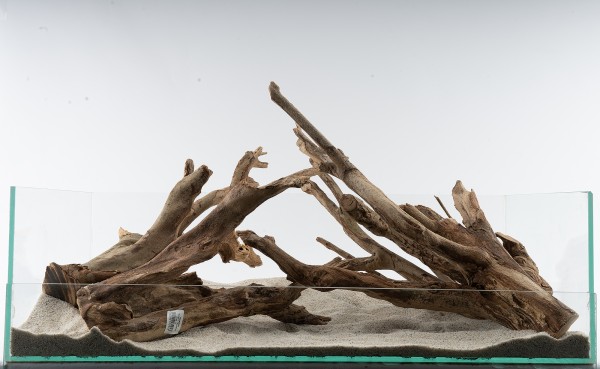
Mangrove
The usually somewhat coarser-structured mangrove roots can color the aquarium water particularly strongly at the beginning, and a bacterial lawn also frequently appears on them. In the beginning, mangrove roots float up quite a bit.
Nevertheless, the dark wood is very popular in aquaristics - it can be planted well with moss and perching plants such as fern, bucephalandra or anbias and brings structure and beautiful dark resting points for the eye in the aquarium.
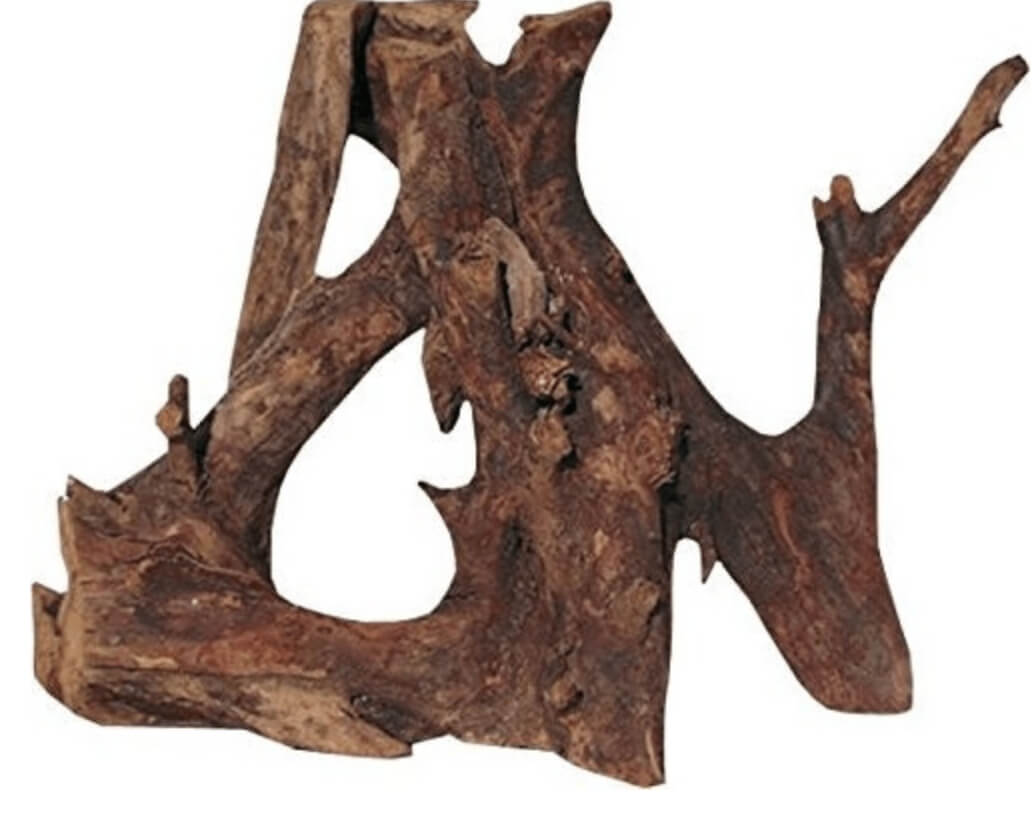
Yati wood
Yati roots, like many other aquarium roots, originate from Asia. Yati is a hardwood that goes down more or less directly in the aquarium. The rather gnarled nature of Yati roots is very interesting for aquarium design, the rough textures lend themselves to rather dramatic layouts and can be super planted.
Yati roots can also stain the water initially, and a light to moderate bacterial lawn can also occur.
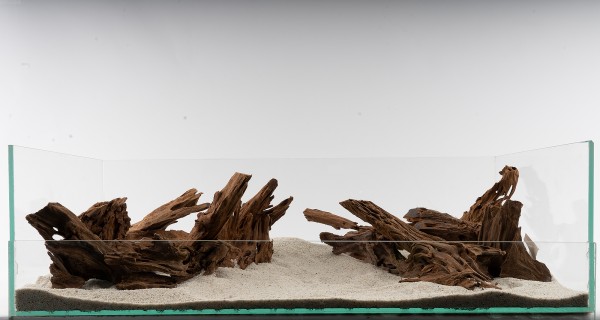
Opuva Wood
Opuva wood is a heavy wood from Africa. Therefore, like Yati roots, Opuva Wood will sink without a long pre-watering period. Opuva has an overall extremely knotty appearance and is super to use in very expressive layouts. Thanks to the many corners and edges of the roots, Opuva Wood can be planted especially well with Anubias, Bucephalandra or ferns, but also with mosses .
Opuva roots can initially release tannins into the aquarium water, turning the water a light brown to amber color. A bacterial lawn may also occur on Opuva Wood.
Savannah Wood
Also from Africa comes the beautiful Savannah Wood - also a hardwood that goes down immediately in the aquarium. Savannah root stains the aquarium water minimally and can also develop a bacterial lawn depending on how fresh it is.
Savannah wood is usually dark brown and particularly gnarled and primitive in shape. The interesting structures of savannah wood create a beautiful picture in the aquarium, regardless of whether the roots are planted or left alone.
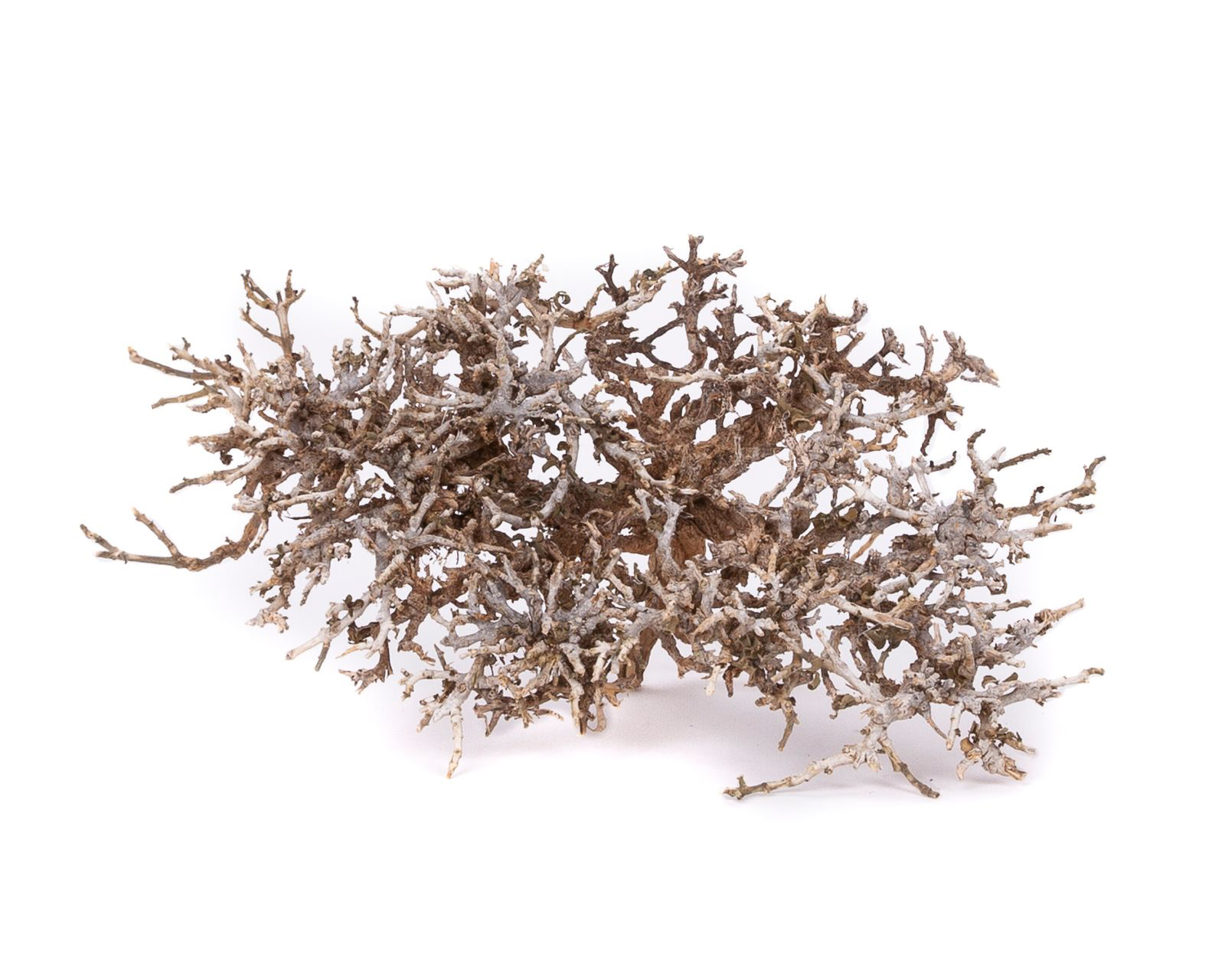
Native woods for the aquarium
Basically, any driftwood that has been in the water for a long time is suitable for the aquarium - if you are looking for these roots in nature, however, you should keep in mind that you often get uninvited guests such as dragonfly larvae or planaria in the aquarium from natural waters. Fresh coniferous wood is not suitable for the aquarium because of the high content of resin with its essential oils. Very soft wood such as willow or poplar decomposes too quickly under water.
However, branches of unsprayed fruit trees look beautiful. They should be dried thoroughly to avoid bacteria formation. If there are also lichens on the branches, the table is richly set for shrimps and snails - for them lichens are a tasty food and a real treat.
Mopani root
Often the bicolored mopani roots are sandblasted, and depending on the blasting agent it can lead to symptoms of poisoning in shrimps. In the meantime, one rarely hears of problems with shrimps and mopani, because these difficulties have also gotten around with the manufacturers, however, there can still be isolated failures.
In itself, Mopani is also a great wood for the aquarium - it sinks quickly, and the compact, gnarled structured light-dark colored wood roots look great depending on the layout. For shrimp aquariums, however, Mopani is unfortunately still not unreservedly recommended.
